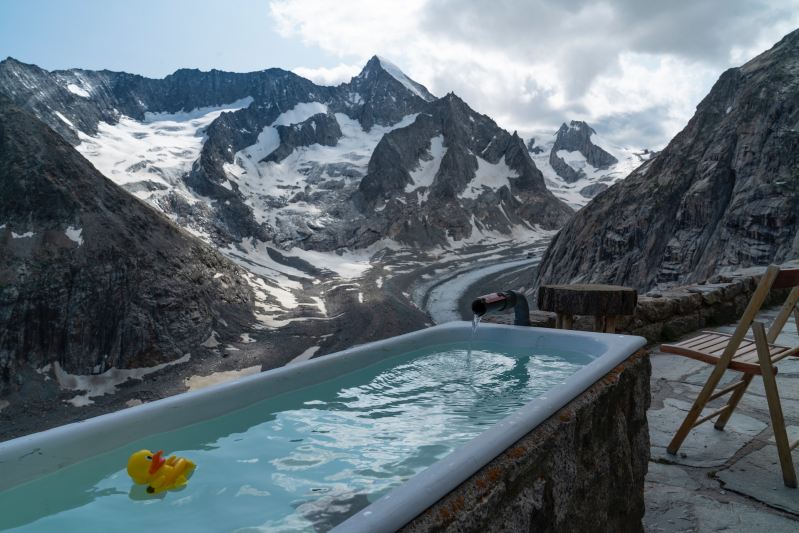Mark Wahlberg has long graced the silver screen, from Planet of the Apes and The Italian Job to Ted and the Transformers: Age of Extinction. He’s also served as the executive producer of five HBO series, including Entourage. To continue his successful acting career and keep up with his fast-paced life, Mark works hard to stay in shape. Lately, he took to Instagram to share that he takes an ice bath, no matter where he goes, and “stays living that cold life”.
Mark posted a video where he’s shirtless and has the hotel employee assist him in filling the hotel bathtub with bags of ice. He stands in front of a cart piled high with ice bags and a note that reads, ‘Ice is being held for VIP’. It seems Mark Wahlberg is one of the Hollywood actors and celebrities who takes his health and fitness regimen seriously, even when he’s on the road. Ice baths are something he doesn’t want to skip out on. Let’s look at the benefits of ice baths and the research behind cold therapy.
What is an ice bath?

Ice baths involve submerging your body in ice water for a certain amount of time. Ice baths might also be called cold therapy or cold-water immersion (CWI). The temperature is typically around 50-59°F, but some people go as low as 38°F. Most people submerge for 5 to 15 minutes in a suitable designated tub either at home or outdoors. Cryotherapy centers are now popping up, allowing people to benefit from cold therapy.
The idea is to expose your body to these cold temperatures for a short time period. Ice baths have a long history, but more research is needed. Other types of cold therapy or cryotherapy include cold showers and cold chambers that are set at a specific low temperature.
What are the benefits of ice bathing?

There are plenty of reasons to take the cold plunge, but you must do it properly and safely in a suitable bathtub. If ice baths make you too cold, your body temperature could drop dangerously low, leading to hypothermia. Direct contact with ice can also burn your skin. If you have any questions or concerns about ice baths or if you have underlying heart, lung, or health conditions, consult your healthcare provider or doctor.

When you dip into an ice bath, the cold water lowers your skin and body temperature, which narrows your blood vessels and moves blood to your core to help you stay warm. When you get out, your blood vessels expand again to help pump nutrient- and oxygen-rich blood back to your tissues and muscles, which could reduce inflammation and delayed-onset muscle soreness or DOMS after exercise.
Here are some of the many benefits of ice baths:
- Improve your mood.
- Reduce muscle soreness.
- Studies show routine ice bathing could reduce your pain and cardiovascular risks.
- Research shows that cold-water immersion can enhance your immune system.




